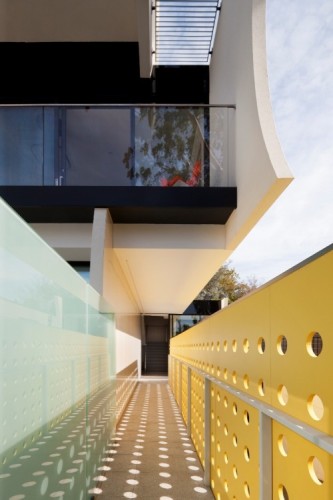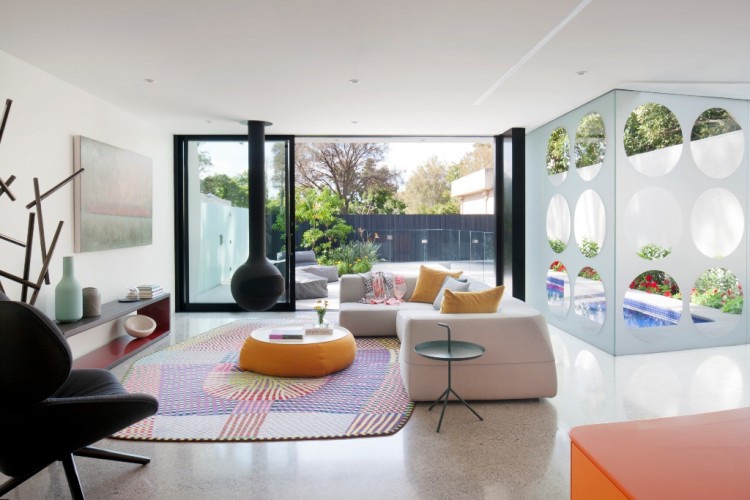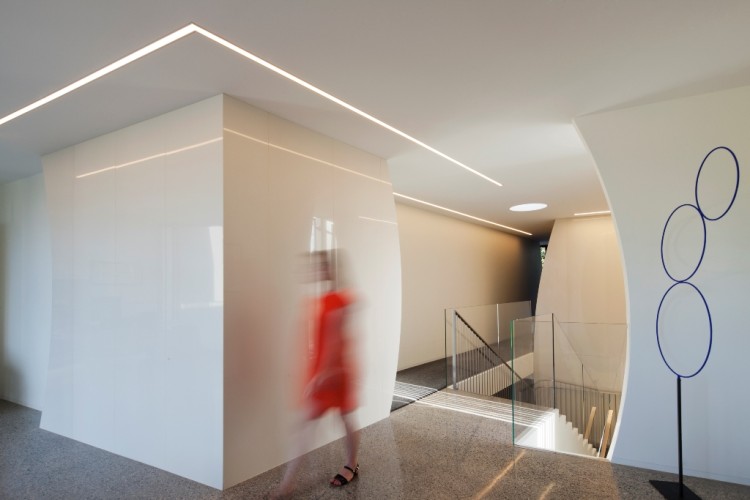
Shapes and shadows: the architect at home
Share
Photography by Shannon McGrath.
In the Melbourne suburb of Brighton, Robert Puksand, Founding Partner at design practice Gray Puksand, has completed a $1.8 million residential project – his own family home.
Field House is the result of Puksand’s personal exploration of architecture as a protagonist for creating happy spaces, and takes its name from the idea of making space with amorphous architecture that attempts to overcome traditional interpretations of ‘outside’ and ‘inside, and even ‘house’.
Puksand says that Field House is designed to be seen as an arrangement of planes that appear to float and connect in unexpected ways to create a field where the occupant can engage in space which is striated and sandwiched.
“I wanted to create a setting that was like living in a sculpture,” he said. “The whole house is about creating delight with curves and the play of shapes.”
Field House is a low maintenance home with a hand-crafted polished concrete floor, designed to maintain comfort using passive design principles with screens, skylights and glazing that result in a play of shapes and shadows.
“When you go down the road of relying on the planes playing against each other and using that as your main idea for the house, you need to keep the finishes austere and minimalist,” Puksand said.
Solid boundary walls on the east and west side provide passive thermal control and respond to the architectural concept with long floating planes while also providing privacy to neighbouring homes. Full height glazing at the north and south facades allow natural light to flood in, and for breezes to find their way through the home.
The complex design of Field House meant that a close working relationship was necessary between the architect and builder, 360 Construction, with many construction details resolved following rigorous on-site testing of new materials sourced from Europe. The external polished ceramic panel cladding and exterior grade MDF used for the entry screen were sourced during the build, while the curved wall ends required complicated framework.
Puksand’s bold design successfully merges architectural theory with sculptural forms and his personal design brief to enrich his family’s daily life through space making.



















